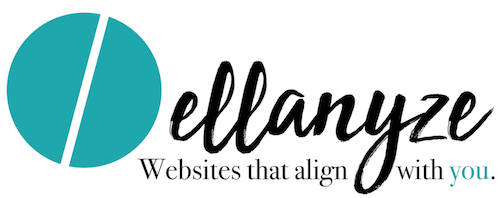Nothing says “unprofessional” like broken links on your website, so let’s get to fixing them, shall we? Here’s how to find them, correct them, and in many cases avoid them in the first place!

There’s really nothing like someone emailing to tell you you have broken links on your website to brighten up your day, am I right or am I right?
Well, not exactly.
Maybe it’s just because I’m a web designer, but I think people pointing out broken links has to be one of the most embarrassing things there is in business.
As well-meaning as it may be, it also feels like another way of saying “You were not paying attention to the details – and I noticed.”
Broken links are ALSO bad for your search engine ranking. When Google’s crawl bots see that you have broken links, they take it as a sign that your site isn’t well-maintained and therefore isn’t as relevant and credible as other websites. And down your page rank goes…
So, let’s fix them up, shall we?
The three tools/ideas below will arm you with a plan to find those broken links, bandage them up, or in many cases avoid having them in the first place. Let’s GO!
#1 – Broken Link Checker Plugin
If you have a WordPress website (and stats say that every 2 in 3 business owners do), there’s a great free plugin named (quite appropriately) Broken Link Checker. Simply install, run the scan, and check out your list of broken links. It’s a real time-saver.
#2 – Set up URL Redirects
If you ever launch a new website (thus deleting your old one), change any of your page URLs, or delete any pages altogether, you’ll want to set up URL redirects to point those recently-deceased page URLs to their most relevant “living” page URLs, respectively.
What is a URL redirect? It’s a rule created at your hosting company or in your WordPress admin that tells the browser that when someone enters mydomain.com/old-page take them automatically to mydomain.com/new-page. Handy, huh?
And if you’re thinking that no one will ever type in that old link – think again! They may exist somewhere out in the ether – not to mention they may still come up in a Google search. So if someone ever comes across one of them, that person will NOT be faced with a broken link. Success!
A note: Typically it’s best to set these up in your hosting cPanel (ask customer support if you’re not sure how), but you can also try this WordPress plugin, Redirection, and see if that works.
#3 – Conduct a quarterly “Link Scan.”
Every three months or so, it’s a great idea to set aside some time and complete the perhaps boring but very important task of going through every single page on your website and clicking every single link, just to make sure they all go where they’re supposed to.
But, you might be wondering, why do we have to do this if we have that handy Broken Link Checker plugin? Because you might have links that aren’t broken per sé, but that definitely go to the wrong place – and that’s not much better.
And if this sounds like something you have no interest in doing – have your virtual assistant do it instead! 🙂
In Closing
Broken links are a drag. They’re a drag for you, they’re a drag for your site visitors, and they’re a drag for your page rank on Google. So, get ahead of the game, and beat them before they happen!
Looking for more?
For more smart tips on getting your website into tip-top shape, check out these other quick reads from Janelle (that’s me) at Ellanyze:
3 Things You Can Do RIGHT NOW to Improve Your Website’s SEO

Leave a Reply